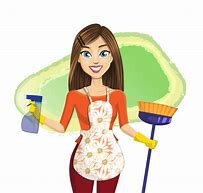Cleanliness is next to Godliness
/Did your Mama or Grandma ever use that phrase, “Cleanliness is next to godliness” to guilt you into taking the bath that children universally balk at? Well let me just start off by saying that while that phrase is not in the Bible, the essence of it surely is. Ritual washing is part of the Mosaic law and bathing is often mentioned as a common practice – remember Pharoah’s daughter found baby Moses while visiting the river to bathe.
There are things we take for granted these days and I guess bathing is one of them. Well you know that when I’m writing a novel my characters are always going through the motions of everyday life and that drives me to research things like what kind of dish soap was available in 1900? And I learn the most interesting facts that way.
So we’ve all heard talk about the chore of making soap. And maybe some of you have even seen folks doing it. Generally soap on the mountain required a good store of hardwood ashes that would be placed in a hopper with cold water run over them to leach out the lye. Once separated (and I suppose strained because I would’ve got a lot of trash in that water) the lye can be combined with lard to create soap.
Most everybody used to have a big old soap pot – and since that was cast iron and therefore porous I’m not at all sure you could use the same kettle for anything else. And since the lye is caustic, cooking it out in the back yard is a really good idea. So you’d have to build a fire under the kettle and cook the lye, water and fat for an hour or more. Then you’ll get the soap out into molds you’ve got ready and waiting where it will cool for another 24 hours. I was taught they have to cure for some time after that although the online directions say it’s okay to use it right away. Whew, it made me tired just telling you how to make it – do you see how we take that Dove bar for granted?
The American Cleaning Institute has a great article about soap’s history and it reminds us that those years of terrible plagues were directly related to poor hygiene. And not much wonder because soap was considered a luxury item and taxed as such until the mid-1800’s! When officials lifted that tax the people started keeping cleaner and therefore healthier. Don’t you suppose that folks put two and two together and realized there was less sickness when they washed a little more often? John Wesley said here in 1791, “Cleanliness is indeed next to godliness" so we know that phrase was common well before 1800.
I’m so often reminded how hard it is to really put myself in the shoes of my ancestors because it’s easy to assume they always had plenty of hogs to kill and therefore plenty of lard for soap. But then I have to remember that lard was a staple of their cooking as well. Remember there was no Crisco to soften biscuits or vegetable oil to give that crispy crust to cornbread not to mention how you would fry chicken or side meat without some kind of fat. And if you’re raising ten children the amount of lard needed for cooking boggles the mind, not to mention how much soap that family could use.
I tried to do a little research on this and while lots of people are still making fancy soaps as a cottage industry, there don’t seem to be many people using hog lard. It seems like the ration is something like 3 pounds fat yields 4.5 pounds soap. That sounds like a lot of soap since I bring home bath soap in 4 ounce bars. But then there’s the dish soap and the laundry soap. How long do you think four and a half pounds of soap would last for all of your cleaning needs?





